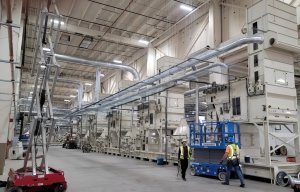
Large-scale hemp gin up and running in Texas
Team develops a set of textile-based pneumatic computers capable of digital logic, onboard memory and user interaction.
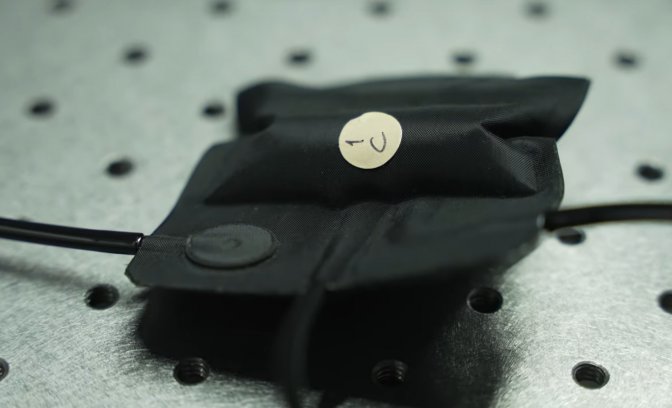
2nd September 2022
Innovation in Textiles
|
Houston, TX, USA
Engineers at Rice University’s George R. Brown School of Engineering are aiming to turn clothing into computers – and doing it without electricity.
The team has developed a set of textile-based pneumatic computers capable of digital logic, onboard memory and user interaction. The use of “fluidic digital logic” exploits how air flows through a series of kinked channels to form bits – the ones and zeros in computer memories.
At the centre of the concept sits a NOT gate – a basic component of computer circuitry also known as an inverter. This logic gate’s output is the inverse of the input. In an electronic circuit, the gate is on or off (1 or 0), but the pneumatic gate replaces those terms with “high” or “low” air pressure.
The idea is to have such textile-based logic gates support pneumatic actuators, potentially in conjunction with an energy harvesting system also developed by the Rice team, to help people with functional limitations perform tasks without electronic assistance. Such devices could eliminate the need for wearers to carry bulky power units.
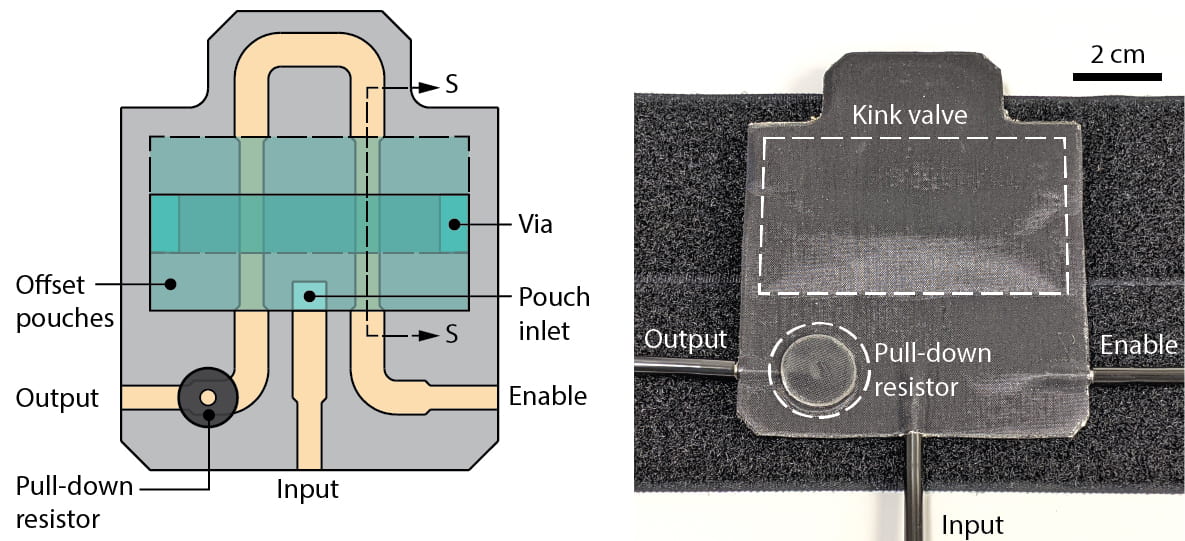
Mass production
Daniel Preston, an assistant professor of mechanical engineering at Rice, said the lab’s logic-enabled textiles can be mass produced using existing fabric-manufacturing processes and are resilient enough to withstand everyday use. The embedded gates are both comfortable and tough enough to drive a truck over without damaging them.
“The idea of using fluids to construct digital logic circuits is not new, and in fact, in the last decade people have been moving towards implementing fluidic logic in soft materials like elastomers,” Preston said. “So far, no one has taken the step to implement it in sheet-based materials – a feat which required redesigning the entire approach from first principles.”
The lab tested its logic on devices that assist users with physical motion and a system to raise and lower a hood with the push of a button, with no electricity involved for thermoregulation.
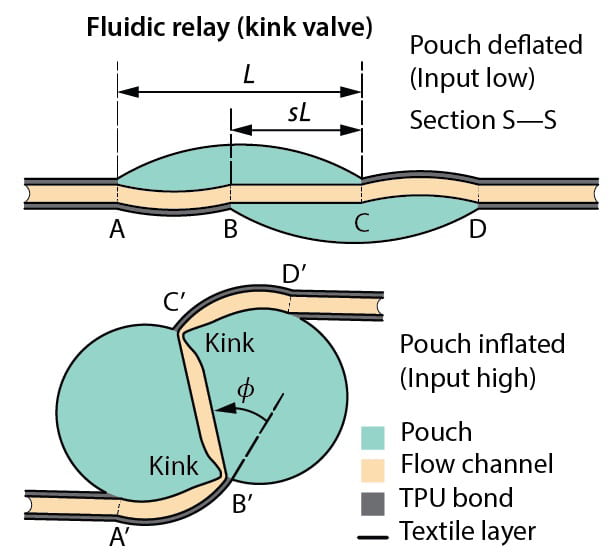
“We think there’s a host of ways this can be implemented to help people go about their daily activities,” Preston said. “One of the next areas we’re looking into is sensing intent. As soon as the wearer initiates a course of action, we can then offer assistance for the remainder of that action.
“For example, you might start to grasp an object and if the system senses your intent, it will give you some assistance in closing your hand around that object so you can lift it up.”
“We think of the logic element as, at its most fundamental level, containing both a relay and a fluidic resistor,” added Anoop Rajappan, a Rice postdoctoral fellow. “These would be equivalent to having an electronic relay or transistor paired with the resistor, which is the foundation of typical transistor-resistor logic.”
The pneumatic system depends on a concept Preston describes as a mathematically designed kink geometry, implemented in pressure-controllable valves that cut the flow of air the same way a bent garden hose stops water.
The valves, each about a square inch in size, are laminated into the textiles and have proved robust enough to handle 20,000 on-off cycles and one million flex cycles, as well as 20 cycles in a standard household washing machine.
Extra limb
Using its textile-based energy harvesting system the team has already built an extra limb which is able to grasp objects and go, powered only by compressed air.
The prototype “arm” is a piece of fabric that hugs the body when not in use, but extends outward when activated and incorporates an elastomer lining on the surface to maintain its grip on slippery objects. Preston said future versions could have sensors that anticipate the wearer’s intent and complete the movement.
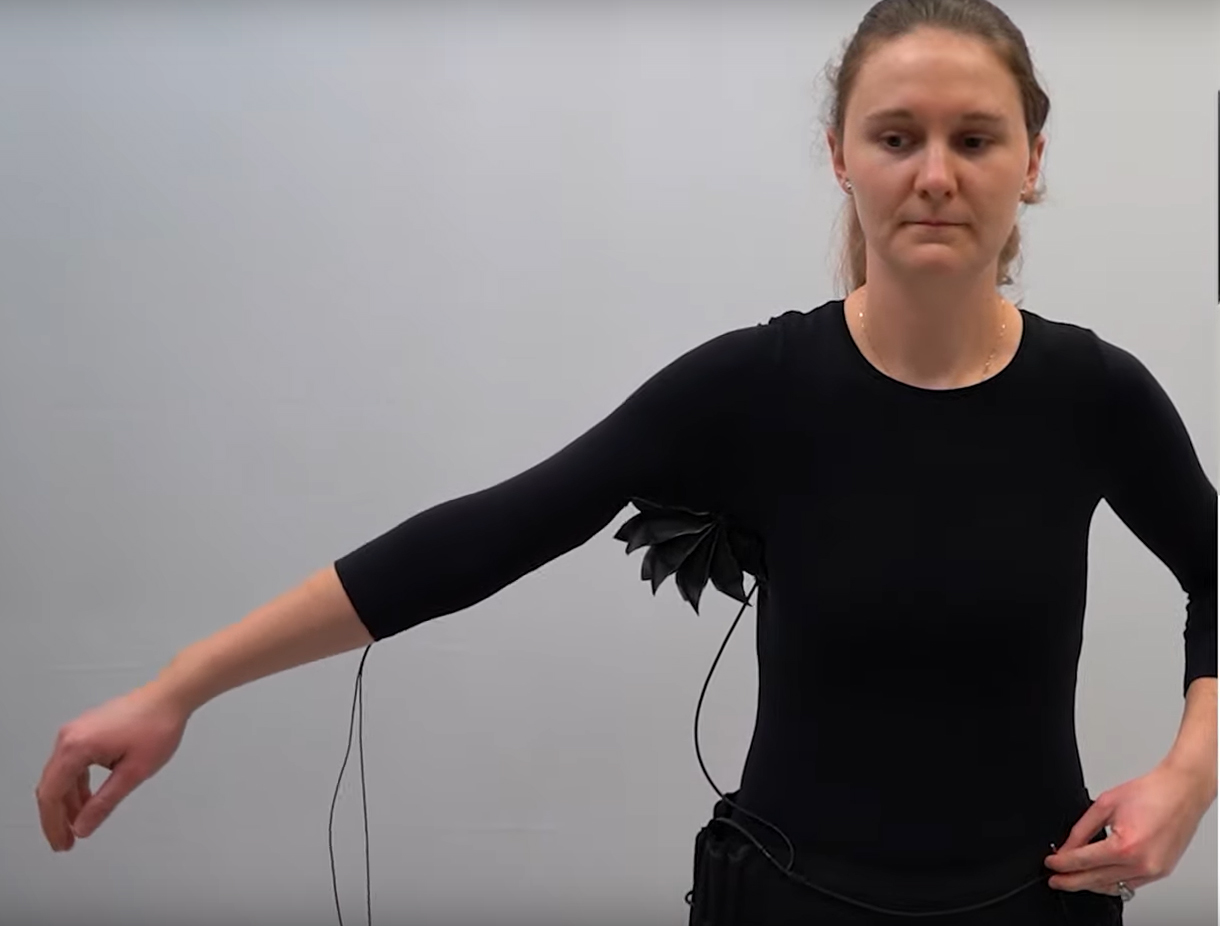
In addition to the curling arm that can grip a cup or other small objects while the user’s hands are full, the Rice lab built a shirt with a bellows-like actuator attached at the armpit that expands, enabling the wearer to pick up a ten-pound object. Testing the apparel on a mannequin showed it could do so without an assist from human muscles.
The system requires two components – textile pumps embedded in the soles of walking shoes that harvest air pressure and pneumatic actuators that make use of that pressure where needed. The pumps are filled with open-cell polyurethane foam that allows them to recover their shape after every footfall.
Preston said all the components for a single device cost the lab about $20. The products are simple to assemble and robust enough to be cleaned in a washing machine with no degradation in performance.
“The fabrication approach uses techniques that are already employed in the garment industry, things like cutting textile sheets and bonding them with heat and pressure,” he said. ‘We’re ready to think about translating our work towards products.”
Along with test units, the lab also developed mathematical models to predict how well an assistive device would perform based on a user’s weight and walking speed, among other parameters.
“Now that we’re providing the power, we can tap into all the existing work on actuation,” Preston added. “This would include things like gloves that help people close their hands, assistance at both the elbow and shoulder joints and other devices that still rely on typically rigid and bulky power supplies that are either uncomfortable or require being tethered to external infrastructure.”

Business intelligence for the fibre, textiles and apparel industries: technologies, innovations, markets, investments, trade policy, sourcing, strategy...
Find out more